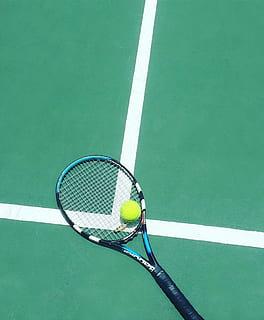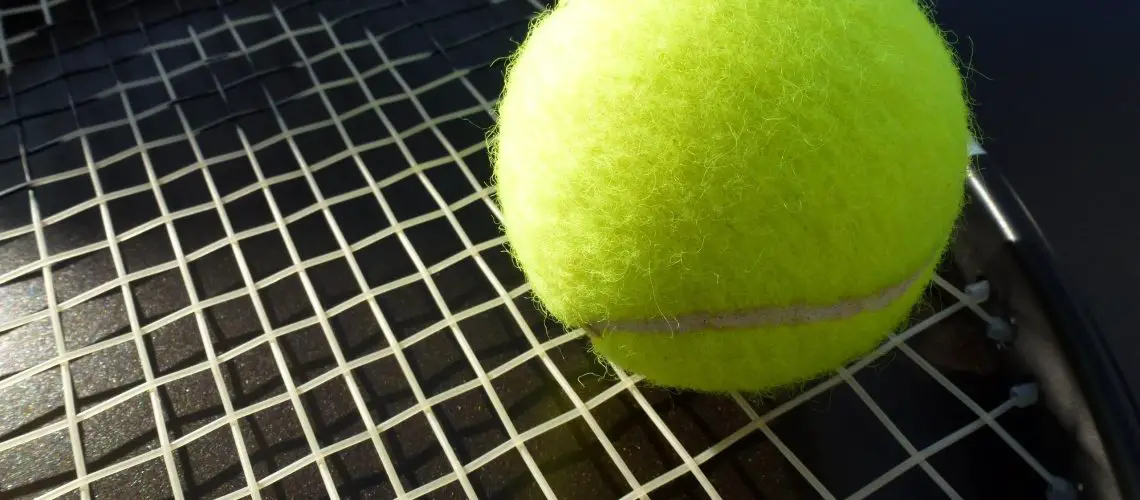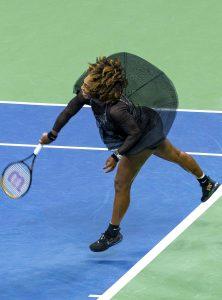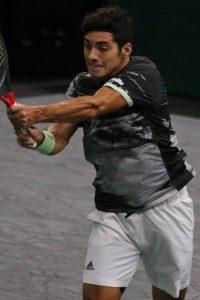We may earn money or products from the companies mentioned in this post.
Introduction

When it comes to the world of tennis, language is a powerful tool that can bridge gaps and foster deeper connections In particular, learning Spanish terminology in tennis opens up a whole new realm of communication and understanding Whether you’re a player, coach, or simply an avid fan of the sport, being able to converse fluently with Spanish-speaking players can have numerous benefits Additionally, having knowledge about the history and development of tennis in Spain provides valuable context and appreciation for the game’s cultural significance
Importance of learning Spanish terminology in tennis
1 Expanding communication with Spanish-speaking players
In today’s globalized tennis landscape, players from all corners of the world come together to compete on an international stage With a significant number of talented Spanish-speaking players making their mark in the sport, learning Spanish terminology becomes crucial for effective communication both on and off the court Understanding common phrases such as “vamos” (let’s go) or “adiós” (goodbye) not only facilitates better teamwork but also allows for genuine connections between players from different backgrounds
2 Enhancing understanding of the game in different cultures
Tennis is more than just a sport; it represents a diverse tapestry of cultures and traditions coming together under one shared passion Learning Spanish terminology helps unlock insights into how tennis is perceived and played within Hispanic communities around the world From terms like “saque” (serve) to “revés” (backhand), embracing these linguistic nuances deepens our appreciation for different playing styles and strategies employed by Spanish-speaking athletes
Brief history of tennis in Spain
1 Origins and development
Spain has long been associated with a rich heritage in sports, including its unique contribution to the world of tennis The origins of organized tennis in Spain can be traced back to the late 19th century when the sport gained popularity among the Spanish elite Over time, tennis clubs sprouted across the country, nurturing a generation of talented players who would go on to leave an indelible mark on the international tennis scene
2 Famous Spanish tennis players
Spain boasts a remarkable lineup of tennis legends who have achieved worldwide recognition for their exceptional skills and achievements From Rafael Nadal, known for his relentless intensity and unwavering determination, to Conchita Martínez, renowned for her graceful playing style and tactical brilliance, Spanish players have consistently left their mark on Grand Slam tournaments and other prestigious competitions
As we delve deeper into Spanish terminology in tennis and explore the rich history of the sport in Spain, we gain a deeper understanding of its global impact With this knowledge comes not only improved communication with Spanish-speaking players but also an enriched appreciation for a sport that transcends borders and unites people from all walks of life So let’s pick up our racquets and embark on this exciting linguistic journey through the world of tennis en español!
Tennis Terminology in Spanish

Basic Terms
When it comes to tennis, understanding the basic terms is essential In Spanish, tennis is known as “Tenis” A player is referred to as “Jugador” for a male player or “Jugadora” for a female player The court is called “Cancha” or “Campo de tenis,” and the ball can be referred to as either “Pelota” or “Bola”
Equipment and Gear
To play tennis effectively, having the right equipment and gear is crucial In Spanish, a racket is known as “Raqueta” Good-quality tennis shoes are called “Zapatillas de tenis,” providing players with the necessary support and grip on the court The net is referred to simply as “Red” Lastly, stringing your racket, an important aspect of maintaining optimal performance, is called “Encordado”
Scoring System
In order to keep track of points during a tennis match, familiarizing yourself with the scoring system is important In Spanish, a point translates to “Punto” A game is known as “Juego,” while a set goes by the name of “Set” And when it comes to an entire match, you can use either “Match” or “Partido”
Tennis Techniques and Strategies
To excel in tennis, mastering various techniques and strategies is key One of the most crucial skills in this sport is serving; in Spanish, it’s known as both “Saque” and “Servicio” Another technique worth honing is volleying or hitting balls before they bounce – this move is referred to as a “Volea” When it comes to hitting backhand shots, you’ll hear the term “Reves,” while the forehand shot is called “Derecha”
By understanding and utilizing these tennis terms in Spanish, you’ll be able to fully immerse yourself in the game and communicate effectively with other players, coaches, and fans ¡Vamos a jugar al tenis! (Let’s play tennis!)When it comes to practicing tennis, Spanish-speaking countries offer a rich tradition and vibrant tennis culture Countries such as Spain, Argentina, and Chile have produced some of the world’s top tennis players Whether you’re a beginner looking to improve your skills or a seasoned player seeking competitive matches, these countries provide ample opportunities for tennis enthusiasts
In these Spanish-speaking countries, you’ll find various types of courts that cater to different playing styles Clay courts, known as “tierra batida,” are popular due to their slower pace and ability to enhance players’ technique and stamina Grass courts, or “césped,” offer a faster playing surface that requires quick reflexes and agility Carpet courts, referred to as “alfombra,” provide a consistent bounce and are often used for indoor play Lastly, hard courts, known as “pista dura,” offer a versatile surface suitable for all playing styles
Local tournaments, leagues, and clubs play an integral role in nurturing the tennis talent within these countries Amateur-level events allow players of all skill levels to compete against fellow enthusiasts in friendly competitions For those aiming to take their game to the next level, professional-level events provide an opportunity to showcase their skills on a larger stage
Young aspiring athletes can also benefit from the numerous youth programs and academies available in Spanish-speaking countries These programs focus on developing young talent by providing specialized training sessions conducted by experienced coaches Tennis academies offer comprehensive training programs that encompass technical skills development, physical conditioning, mental preparation, and tournament participation
By immersing yourself in the tennis scene of Spanish-speaking countries like Spain, Argentina, and Chile, you’ll not only have access to top-notch facilities but also be surrounded by passionate players who share your love for the sport So whether you’re honing your skills on clay or gliding across grass courts with finesse – there’s no shortage of opportunities for practicing tennis in these vibrant, tennis-loving nations
Advantages Of Knowing Tennis Terminology In Spanish

Tennis is a global sport that transcends borders and language barriers Whether you’re a player, coach, or simply an avid fan, knowing tennis terminology in Spanish can provide you with numerous advantages and open up exciting opportunities Let’s explore some of the key benefits:
Improving communication skills with players and coaches
Understanding instructions and effectively communicating on the tennis court is essential for player development By familiarizing yourself with tennis terminology in Spanish, you can bridge any language gaps that may exist between you and your teammates or coach This will enable you to grasp instructions more quickly, implement strategies more effectively, and engage in meaningful discussions about techniques and game plans
Enhancing travel experiences in Spanish-speaking countries
If you’re a passionate traveler who loves exploring different cultures while indulging in your favorite sport, knowing tennis terminology in Spanish can greatly enhance your experiences When visiting Spanish-speaking countries like Spain or Argentina, being able to converse about tennis in the local language will allow you to connect with local players and enthusiasts You can participate in local tournaments or friendly matches, join clubs or social groups dedicated to tennis, and form lasting friendships with fellow players from diverse backgrounds
Increasing employment opportunities
The world of tennis offers various career paths where knowledge of tennis terminology in Spanish can give you an edge If coaching or instructing is your passion, being able to communicate fluently with players from different linguistic backgrounds will make you a valuable asset Additionally, pursuing a career in sports journalism or broadcasting becomes more feasible when equipped with bilingual skills Being able to conduct interviews, deliver commentary, or write articles about tennis events in both English and Spanish opens doors to wider audiences both locally and internationally
In conclusion, knowing tennis terminology in Spanish provides a range of advantages From improving communication on the court to enhancing travel experiences and increasing employment opportunities, being bilingual in the language of tennis opens up exciting possibilities So why not take the initiative to expand your linguistic skills and dive into the vibrant world where tennis meets Spanish? ¡Vamos!
Useful Links

How to Say Tennis in Spanish
How to say tennis in Spanish
How to say (the) tennis in Spanish
tennis court – translation into Spanish from English
The Spanish Tennis Pipeline that’s produced Carlos …
Why is it “juego al tenis”? Is it the | Spanish Q & A
tennis – Translation into Spanish – examples English
The 19-Year-Old Spanish Tennis Star Coming For Rafael …
play tennis (English → Spanish) – DeepL Translate
El Tenis (Tennis) – Books
Secrets of Spanish Tennis: Paradigms and Superstructure
Tennis in Spain
How to Pronounce Tennis (Tenis) in Spanish – YouTube
play tennis – Spanish English Dictionary
Spanish tennis vocab Flashcards
Tennis Vocabulary in Spanish and French
Royal Spanish Tennis Federation
Carlos Alcaraz: Five things to know about Spain’s new …
Royal Spanish Tennis Federation Official Kits
Grandes Español: Rafael Nadal and the Top 10 Spanish …






